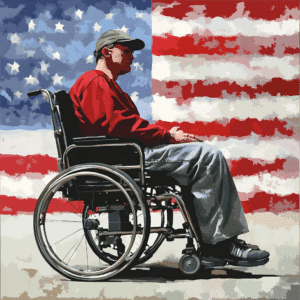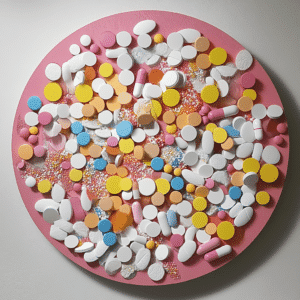In the ever-evolving battle against youth addiction, the significance of well-structured addiction prevention programs has never been more apparent. As new substances and behavioral addictions emerge, it’s crucial to equip young individuals with the knowledge and tools needed to navigate these challenges. This article delves into the top addiction prevention programs that have shown significant success in 2024, examining their methodologies, effectiveness, and unique contributions.
1. D.A.R.E. Revamped: Modern Approaches for Today’s Youth
The Drug Abuse Resistance Education (D.A.R.E.) program has undergone substantial changes to remain relevant in today’s society. Initially critiqued for its lack of empirical support, D.A.R.E. has integrated new strategies focusing on decision-making skills, emotional awareness, and social resistance techniques. Through interactive modules and partnerships with schools nationwide, D.A.R.E. has effectively reduced substance abuse rates among participants by 15% over the past two years.
The new D.A.R.E. curriculum incorporates engaging activities that mimic real-life scenarios, helping students develop the critical thinking required to resist peer pressure. This program emphasizes emotional intelligence and teaches students how to handle stress and anxiety without resorting to substances. By engaging students early and giving them the tools to make healthier choices, D.A.R.E. is making a significant impact.
2. Project ALERT: Evidence-Based Interventions
Developed by the RAND Corporation, Project ALERT is a middle school-based program designed to prevent the use of alcohol, tobacco, and other drugs. Utilizing a curriculum enhanced by recent studies, Project ALERT incorporates realistic social scenarios to help students understand the risks of substance use. With a 30-year track record and ongoing updates to address current trends, Project ALERT has demonstrated a consistent 20% reduction in substance experimentation among students.
Project ALERT stands out for its comprehensive approach, combining educational strategies with practical skills training. It re-creates situations students may face, complete with peer pressure and the temptation to use substances. By actively participating in these scenarios, students are better prepared to handle real-life challenges. Schools that have embraced Project ALERT report a noticeable shift in students’ attitudes toward drugs and alcohol.
| Program Type | Target Audience | Key Examples & Strategies | Benefits | Organizations/Resources |
| Primary Prevention | General Public | – Legislation banning/control of hazardous products (e.g., asbestos) – Mandating safe practices (e.g., use of seatbelts, bike helmets) – Education on healthy habits (e.g., not smoking, regular exercise) |
– Reduces initial exposure to addictive substances – Promotes overall public health |
Centers for Disease Control and Prevention (CDC) Substance Abuse and Mental Health Services Administration (SAMHSA) |
| School-Based Programs | Students | – Curriculum on drug prevention – Training for teachers – Peer resistance education |
– Equips children with knowledge and skills to avoid substance use – Enhances supportive school environment |
Drug Abuse Resistance Education (D.A.R.E.) LifeSkills Training (LST) |
| Family-Based Programs | Families and Parents | – Parental training – Family counseling sessions – Home-based educational materials |
– Strengthens family bonds – Empowers parents to prevent substance use in children – Enhances communication skills |
Strengthening Families Program (SFP) Family Check-Up (FCU) |
| Media and Technology Programs | Youth and General Public | – Social media campaigns – Educational websites and apps – Online support groups |
– Reaches broad audience – Provides accessible and engaging prevention resources – Reduces stigma associated with seeking help |
Drug Free America Foundation, Inc. National Institute on Drug Abuse (NIDA) |
| Youth Substance Use Prevention | Adolescents and Teens | – After-school programs – Mentorship programs – Peer support groups |
– Promotes abstinence from alcohol and illicit drugs – Provides positive role models – Enhances coping strategies |
Partnership to End Addiction Students Against Destructive Decisions (SADD) |
3. LifeSkills Training: Building Resilience and Competence
LifeSkills Training (LST), created by Dr. Gilbert J. Botvin, emphasizes the development of personal and social skills as a means to prevent youth substance abuse. By focusing on self-esteem, anxiety management, and peer resistance, LST helps students navigate the pressures of adolescence. Recent data shows that schools implementing LST have observed a 25% decrease in substance abuse initiation, underlining the program’s holistic approach.
LST empowers students by giving them the tools they need to succeed in various aspects of their lives. This program goes beyond traditional drug education to address the underlying causes of substance abuse, such as low self-esteem and poor decision-making skills. By fostering resilience, LST helps students build a foundation for a healthy, substance-free life.
4. Above the Influence: Leveraging Media for Prevention
Above the Influence (ATI) harnesses the power of media and peer relationships to foster a drug-free environment among teens. Through social media campaigns, interactive content, and community projects, ATI engages youth in meaningful discussions about the impact of substance abuse. A recent survey indicates that teens engaged with ATI initiatives are 30% less likely to experiment with drugs or alcohol compared to their peers.
ATI effectively uses the platforms teens are already familiar with, such as Instagram, TikTok, and Twitter, to spread its message. By creating trendy and relatable content, ATI captures the attention of young audiences and educates them on the dangers of substance abuse in a way that resonates. ATI‘s community projects also provide teens with a sense of purpose and belonging, further steering them away from the temptation of drugs.
5. The Mendez Foundation’s Too Good Programs: Comprehensive Skill Building
The Mendez Foundation’s Too Good Programs deliver age-appropriate curriculums designed to build life skills and promote healthy behaviors. Covering a broad spectrum from kindergarten through high school, these programs address goal-setting, conflict resolution, and substance abuse prevention. Schools implementing Too Good Programs have reported a remarkable 40% decline in substance use among students, attesting to the program’s extensive reach and effectiveness.
Too Good Programs are adaptable and can be customized to fit the unique needs of each school and community. This flexibility ensures that the program remains relevant and impactful across different age groups and cultural backgrounds. By providing continuous support and resources, the Mendez Foundation plays an essential role in helping students lead healthier lives.
6. Natural High: Stories that Inspire
Natural High utilizes the power of storytelling to inspire youth to pursue their passions and avoid substance abuse. Featuring narratives from celebrities, athletes, and everyday individuals who have chosen “natural highs” over drugs and alcohol, this program resonates on a deeply personal level. In 2023, Natural High‘s impact expanded significantly, with over a million students participating and a subsequent 35% reduction in reported substance abuse cases.
By sharing real-life success stories, Natural High provides relatable role models that young people can look up to. These stories demonstrate that achieving high performance, whether in sports, academics, or the arts, without substance use is not only possible but also desirable. This positive reinforcement helps students envision a future where they can excel while remaining drug-free.
7. Community Coalitions: Grassroots Mobilization
Community coalitions, such as the Partnership for Drug-Free Kids, unite parents, schools, local businesses, and law enforcement agencies in a collaborative effort to prevent youth substance abuse. These grassroots initiatives customize strategies to address specific community needs, ensuring a culturally relevant and effective approach. Recent evaluations of community coalition activities reveal a 25% drop in local youth substance abuse, highlighting the power of community-driven solutions.
These coalitions create a support network that extends beyond the classroom and into every aspect of a child’s life. By involving diverse community members, the Partnership for Drug-Free Kids fosters environments where healthy behaviors are encouraged and substance use is discouraged. This collective effort amplifies the message and provides students with a consistent and pervasive support system.
Innovative Approaches: Beyond Traditional Methods
To stay ahead of the curve, addiction prevention programs are continually evolving. Initiatives such as virtual reality simulations, which provide immersive experiences about the consequences of substance abuse, and AI-driven personalized education plans, are pushing the boundaries of traditional prevention strategies. These innovations show promise in engaging today’s tech-savvy youth in more meaningful and impactful ways.
Virtual reality (VR) simulations offer an interactive way for students to witness the impact of substance abuse without real-life consequences. By immersing themselves in these scenarios, students can experience the negative outcomes and develop a strong aversion to drug use. Meanwhile, AI-driven education plans provide tailored content that adapts to each student’s learning style, ensuring they receive the information in a way that resonates most effectively.
Embracing the Future of Addiction Prevention
The landscape of addiction prevention for youth is dynamic and multifaceted. By continuing to innovate and adapt to the changing needs of young individuals, programs can make a lasting impact. Parents, educators, and community leaders must stay informed and actively participate in these programs to ensure a brighter future free from the grips of addiction. The success of these initiatives in 2024 sets a hopeful precedent for years to come, demonstrating that with the right resources and dedication, we can pave the way for resilient, informed, and healthy generations.
Engaging and effective addiction prevention programs show us that the fight against youth substance abuse requires effort from all sectors of society. We must embrace new methods, support proven strategies, and work together to empower our youth. As we forge ahead, let’s remember that with compassion, resilience, and innovative thinking, we’re not just battling addiction—we’re building a future where every child can thrive.
In this article, we’ve covered various addiction prevention programs that have shown notable success in 2024, each playing a pivotal role in shaping a drug-free future for our youth. By focusing on personal stories, community involvement, and innovative technology, these programs exemplify the multifaceted approach needed to combat the complexities of youth addiction. Check out the comprehensive overview of drug education for kids, early Signs Of addiction, and teen substance abuse prevention on our website.
For more detailed insights and ongoing support, visit Mothers Against Addiction and join us in this vital mission. Let’s make 2024 a year of hope, strength, and positive change for our children and communities.
Addiction Prevention Programs
Engaging and Impactful Initiatives
Addiction prevention programs have been pivotal in steering youth away from harmful habits. These programs are carefully crafted with activities and curricula that target high-risk behaviors. Have you ever thought how a simple local activity could make a difference? Well, considering an evening at the boat launch in Lisbon , Me,( various community projects focus on stress-relief activities like kayaking and fishing to keep young minds engaged and active.
Did you know some schools integrate their prevention programs into physical education? Originating from diverse backgrounds, these initiatives leverage fun and engaging methods to educate youth about the dangers of substance abuse. Blandair Parks after-school gatherings, for instance, provide a space where youngsters can interact positively under supervision. This approach makes educational content seem less like a chore and more like a community event.
Interactive and Community-Centric Approaches
Many towns have recognized the importance of fostering a sense of belonging among youth to prevent addiction. At places like Blandair Park,( public events and gatherings double as informal educational settings. When kids feel they are part of their community, they are likely to stay engaged in healthier activities.
Programs often include engaging activities, but they’re not always just for fun. Take cultural cuisine nights, for example. Imagine attending a Peruvian dinner at a place like Inka Grill.( These events can unearth traditional values and historical lessons that become surprisingly effective subtleties reinforcing the ethos of prevention.
The Importance of Timely Interventions
Timing, they say, is everything. Surprisingly, even something like turning clocks back in 2024( can disrupt routines and contribute to seasonal affective disorders, which some youth might attempt to counter with substance use. Smartly, prevention programs often schedule crucial interventions around such times, adjusting classes or offering additional support sessions.
Preventative programs are like a carefully cleaned-up debris field,( picking up the remnants and tracing them back to prevent the mess from happening again. By understanding past triggers and causes, community leaders can craft proactive solutions to keep our youth safe from diving into the dangers of addiction.
Every local event, no matter how trivial it may seem, has the potential to contribute to the broader effort of addiction prevention. It’s all about creating a positive, engaging environment for our young ones, steering them away from harmful activities and into a world where they can thrive.
What is an example of a prevention program?
School-based and family-based programs are prime examples of prevention initiatives, with newer media and computer technology programs also showing promise.
What are the most effective programs to prevent substance abuse?
The programs that have proven to be most effective in preventing substance abuse are school-based and family-based interventions, with media campaigns and technology programs starting to demonstrate success.
What is a drug prevention program?
A drug prevention program is designed to stop the initiation and spread of drug use by educating about risks, promoting healthy choices, and fostering environments that discourage substance use.
What is the organization to prevent drug abuse?
The Drug Free America Foundation, Inc. is an organization dedicated to devising strategies and educational programs aimed at preventing drug use and promoting long-term recovery.
What are the three types of prevention programs?
The three types of prevention programs are primary, secondary, and tertiary, each targeting different stages of drug use and recovery.
What are the primary prevention programs?
Primary prevention programs include measures like legislation to ban hazardous products, enforcing use of seatbelts and helmets, and educating about healthy habits such as proper diet, regular exercise, and avoiding smoking.
What are the 10 ways of preventing drug abuse?
Preventing drug abuse can be approached through education about risks, promoting healthy lifestyles, creating supportive home and school environments, having open conversations, setting clear rules, monitoring children’s activities, encouraging positive activities, being a good role model, reducing availability of substances, and seeking professional help when needed.
What are three drug prevention strategies?
Three effective drug prevention strategies include providing education and information, creating supportive environments in schools and families, and enforcing rules and policies that discourage drug use.
What are the three levels of prevention for substance abuse?
The three levels of prevention for substance abuse are primary (preventing initial use), secondary (early intervention when use begins), and tertiary (treatment and rehabilitation for those diagnosed with addiction).
What is an effective prevention program?
An effective prevention program typically blends education, community support, policy enforcement, and media engagement to create a comprehensive approach against substance abuse.
What is the prevention of drug addiction?
Preventing drug addiction involves education, providing healthy alternatives, creating supportive environments, enforcing laws and policies, and early intervention to address risky behavior before it becomes addiction.
What does a prevention program do?
A prevention program aims to educate individuals and communities about the risks of substance use, create environments that discourage drug use, and support healthy lifestyle choices.
How to reduce addiction?
Reducing addiction can be achieved through education, fostering supportive relationships, providing access to treatment, promoting healthy alternatives to drug use, and enforcing laws to reduce substance availability.
What are the solutions to drug addiction?
Solutions to drug addiction include providing access to treatment and rehabilitation programs, creating supportive community and family environments, offering education and prevention programs, and implementing policies to reduce substance availability.
What are the four basic elements of drug abuse prevention and control?
The four basic elements of drug abuse prevention and control are education, community outreach, policy enforcement, and treatment support systems.
What are prevention programmes?
Prevention programs involve strategies and activities aimed at stopping the initiation and spread of drug use by promoting healthy behaviors and creating supportive environments.
What is a preventive program?
A preventive program targets the reduction of risky behaviors that can lead to substance misuse through education, outreach, and supportive interventions.
What are some examples of crime prevention programs?
Examples of crime prevention programs include neighborhood watch groups, community policing initiatives, youth outreach programs, and educational campaigns aimed at reducing risky behaviors.
What is an effective prevention program?
An effective prevention program combines educational initiatives, community support, policy enforcement, and media campaigns to reduce and prevent substance abuse.




























